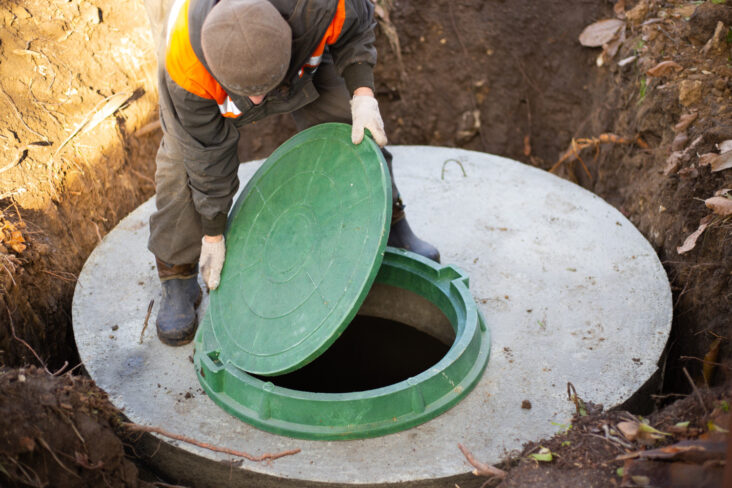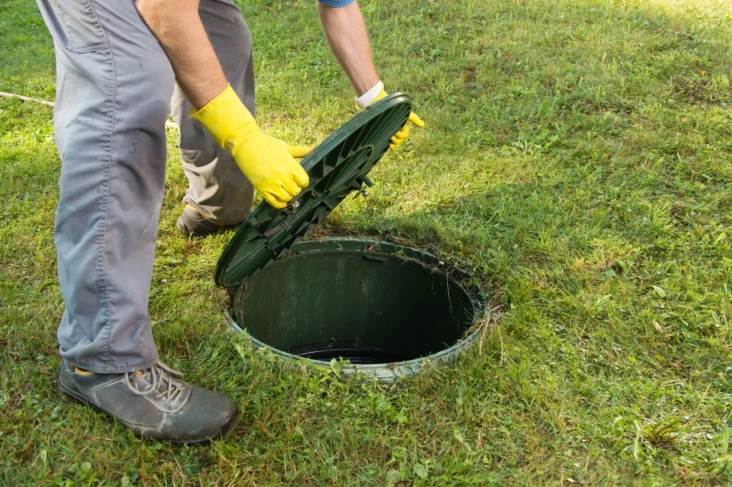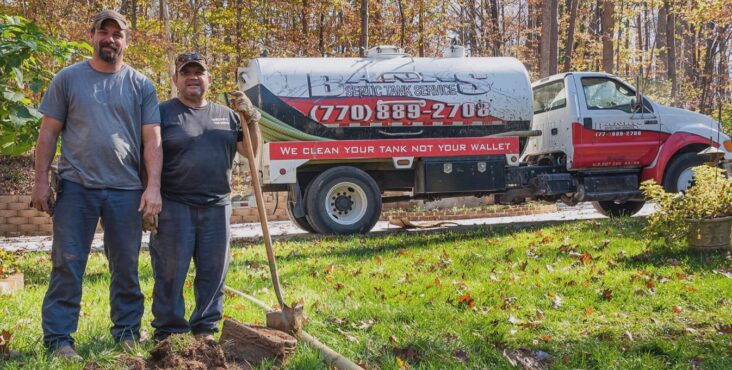The Anatomy of a Septic System: Understanding Your Underground Ally
A septic system is a crucial component of many homes situated in areas without access to public sewage treatment facilities. Understanding the intricate details of its anatomy is vital for homeowners. At the heart of every septic system is the septic tank itself, typically made of concrete, fiberglass, or polyethylene. This watertight vessel, usually buried underground, is where solid waste from the household is collected and begins its decomposition process. The tank is divided into two compartments to promote effective sedimentation, allowing heavier solids to settle at the bottom to form sludge, while lighter materials like fats and oils float to the top, forming scum.
Connected to the tank is a network of pipes that guide wastewater into and out of the tank. The inlet and outlet pipes are designed to prevent overflow and allow treated effluent to be dispatched to the drain field. Meanwhile, the drain field, or leach field, plays a crucial role in filtration and wastewater dispersal. Here, effluent is further treated by soil microorganisms as it trickles through porous soil layers. Components such as soil texture, depth, and porosity come into play, affecting the system’s ability to absorb the treated wastewater effectively. Understanding these parts and how they function together is essential for any homeowner looking to maintain their septic system effectively.
How Soil Quality Influences Septic Tank Efficiency

Soil quality directly impacts the performance and longevity of a septic system. The underlying soil must possess specific characteristics, such as adequate permeability, to ensure that the effluent filters down through the strata efficiently. Too sandy, and the water may filter too quickly, failing to allow for proper treatment; too clayey, and the water could saturate, leading to ineffective drainage and system backup. A soil test can provide insights into these attributes, revealing whether your land is suitable for a typical septic system.
Furthermore, soil pH plays an essential role in microbial function, crucial for waste decomposition. The ideal pH range for microbial activity lies between 6 to 7. If the pH is outside of this range, either too acidic or too alkaline, it may hinder the microorganisms responsible for breaking down organic matter. Understanding the interaction between your septic tank and surrounding soil can provide valuable knowledge, helping you anticipate potential problems before they escalate.
The Environmental Impact of Your Septic System Explained
Understanding the environmental implications of septic systems is paramount, particularly as issues such as groundwater pollution become more prominent. When a septic system fails, the untreated effluent can seep into groundwater or surface water bodies, leading to the contamination of drinking water sources and local ecosystems. This problem is exacerbated in areas with high population densities where multiple septic systems are deployed in proximity to each other.
Moreover, the leakage of nitrogen and phosphorus from poorly functioning systems can lead to eutrophication, resulting in algal blooms that deplete the oxygen in water bodies, harming aquatic life. Homeowners must recognize the potential risks involved and strive to manage their septic systems with care. Regular inspections, maintenance, and education on the proper usage of septic systems can significantly mitigate these environmental hazards, fostering a healthier ecosystem.
Signs You Need Professional Help: Are Your Septic Issues Hiding in Plain Sight?

Even the most well-maintained septic systems can encounter issues, often without clear warning signs. However, there are key early symptoms that homeowners can monitor. One of the most prominent indicators is slow drainage in sinks, toilets, or bathtubs. If multiple fixtures are experiencing sluggish drainage simultaneously, it may suggest a blockage in the septic system rather than simply clogged pipes. Additionally, if you start noticing gurgling sounds in your plumbing when using water, it can indicate air trapped in the wastewater lines, often a precursor to septic failure.
Another symptom to watch for is the development of lush green grass or unusually wet areas above the septic tank or drain field. This can signal leaking effluent that is saturating the soil, presenting both a plumbing crisis and a potential health hazard. Early recognition of these signs can be crucial in preventing a costly and disruptive septic system failure. It’s advisable to consult professionals as soon as these indicators arise, paving the way for timely maintenance and repair.
Smells, Sounds, and Sight: What Your Senses Can Tell You
Your senses can act as useful guides when assessing your septic system’s health. Foul odors emanating from drains or the yard are perhaps the most obvious warning sign that something is amiss. The presence of sewage smells usually indicates that the septic tank is full or that there is a rupture in the drainage system allowing gases to escape. Homeowners should also be wary of unusual sounds in their plumbing system. For instance, persistent gurgling or bubbling sounds may indicate improper ventilation or air blockages within the system.
Visually inspecting your property can also yield valuable clues. In addition to the aforementioned green patches, the appearance of standing water, puddles, or wet spots around the tank or drain field is a clear red flag. Similarly, if any lost or slow ground movement occurs after rainfall, it can indicate compromised functionality. All these symptoms necessitate a prompt response, ideally involving a professional inspection to determine the underlying causes and necessary corrective actions.
When DIY Solutions Just Won’t Cut It: Knowing When to Call the Pros
While DIY maintenance can be an affordable and practical approach to servicing your septic system, certain situations warrant the immediate expertise of a professional. If you notice repeated issues such as frequent backups or persistent odors despite regular maintenance, it’s time to enlist professional help. Additionally, when the system exhibits significant failures such as backup into the home or the presence of liquid effluent on the surface intervention by a qualified technician is essential.
Unaddressed issues can escalate quickly, leading to costly repairs and health risks, making it critical to overcome hesitation in reaching out for professional guidance. Understanding your limitations in addressing complex plumbing or mechanical issues can help you navigate your home maintenance effectively, ensuring that your septic system remains functional and safe.
Maintenance Tips: Keeping Your Septic System in Top Shape

Maintaining your septic system requires a thoughtful approach that balances effective care with mindful practices. Do ensure to schedule regular inspections typically every 1 to 3 years depending on usage to monitor the tank’s condition and the health of the entire system. During these inspections, a professional will check for signs of wear, measure sludge levels, and identify any potential issues that may require attention.
Equally important is adhering to a conscious usage of household products. Do use biodegradable and non-toxic cleaning agents whenever possible, as harsh chemicals can disrupt the microbial ecosystem within your septic tank, hindering the natural breakdown of waste. Additionally, practice water conservation by fixing leaks and spacing out washing loads; overloading the system can jeopardize its efficiency and integrity.
Conversely, there are critical don’ts to remember. Don’t flush any non-biodegradable items such as wipes, feminine products, or paper towels. These can quickly clog the system, leading to backups and potential failure. Avoid pouring grease or food scraps down the drain, as they can solidify within the tank, contributing to build-up. Lastly, don’t plant trees or shrubs near the drain field, as roots can invade the system and cause severe damage.
Seasonal Considerations: Preparing Your System for Weather Changes
As seasons change, so too should your approach to septic system maintenance. Cold winters can pose unique challenges, such as frozen pipes and reduced soil absorption rates. Homeowners should consider insulating the septic tank and providing protection for the drain field during colder months to mitigate any risks associated with frost. Ensuring that the tanks and lines are properly buried and maintaining thermally conductive barriers can be effective strategies against freezing temperatures.
In the spring, after the frost has thawed, conducting a thorough inspection of the system is wise. Flooding from heavy rains can saturate drain fields, leading to inefficiencies. If excessive rainfall occurs, limit water usage to prevent overloading the system during these periods. Conversely, the hot and dry summer months can lead to excessive evaporation, where homeowners should keep an eye on their tank’s levels to avoid allowing the tank to reach critically low levels that hinder functionality.
Lastly, as the fall approaches, consider a deeper cleaning, checking for blockages, especially after the seasonal influx of household activities. Proper autumn maintenance can set the stage for your septic system, ensuring it functions effectively during the harsh winter months.
Eco-Friendly Practices to Enhance Your Septic Health

Integrating eco-friendly practices into your septic system upkeep not only fosters a healthier environment but also enhances the effectiveness of your system. One of the simplest methods is to implement a composting system for waste material such as kitchen scraps instead of relying on the septic tank as a disposal means. This practice reduces the physical burden on the tank and the frequency of maintenance. In addition, consider employing natural cleaning agents made from vinegar, baking soda, and essential oils rather than chemical-laden products which can disrupt good bacteria within the tank.
Moreover, being vigilant in landscaping choices can help promote septic health. Using native plants that require less water and avoiding the use of chemical fertilizers in the vicinity of your system can reduce harmful runoff that adversely affects the effluent quality. Additionally, routinely checking for leaks in fixtures and pipes and embracing water-saving appliances can conserve water, ensuring that the system doesn’t become overloaded.
By proactively engaging in eco-friendly practices, homeowners not only prolong the life of their septic system but also contribute positively to the environment, protecting local ecosystems and reducing the risks of contamination.
Septic Tank Services: Navigating the World of Professional Help

Selecting the right provider for septic tank services is crucial to maintaining the health and efficiency of your septic system. Start by seeking companies with appropriate certifications that demonstrate their knowledge and adherence to industry standards in compliance with local regulations. It’s advisable to look for service providers who have a solid reputation within the community, as reflected by customer reviews and references.
When interviewing potential providers, inquire about their experience with your specific type of system and the range of septic tank services they offer. Important questions include their approach to maintenance schedules, how they handle emergencies, and their methods for assessing tank levels or detecting issues. Additionally, find out whether they have contingency plans in place for unexpected repairs. Transparency, reliability, and a commitment to customer care should be top priorities when choosing the right septic tank service company.
Common Services Explained: Pumping, Inspections, and More
A variety of professional services are integral to managing your septic system effectively. Regular pumping typically every 3 to 5 years, depending on usage is fundamental for preventing solids from reaching the drain field. During the pumping process, technicians use vacuum trucks to remove sludge, scum, and other build-ups, helping maintain efficiency and avoid backups.
Additionally, septic inspections serve as a diagnostic tool, allowing technicians to evaluate the overall health of the system. These inspections often include visual assessments of the tank, drainage pipes, and leach field along with testing the water levels. Services may also extend to camera inspections, using specialized equipment to provide an inside view of pipes and identifying potential blockages.
Beyond these interventions, many service providers offer maintenance agreements that include routine checks and necessary pumps, ensuring peace of mind and continued performance. Familiarizing yourself with the range of services available can help you determine which are best suited for your needs, resulting in a well-maintained septic system.
The Cost Factor: Understanding Pricing for Septic Services
The costs associated with septic system services can vary significantly based on location, provider, and the maintenance required. On average, homeowners can expect to pay about $300 to $800 for a routine pumping service. However, the price can escalate for additional services such as inspections, which may range from $100 to $200, or repairs for broken components that could reach into the thousands depending on the extent of the damage.
It’s crucial to consider these costs as part of your overall home maintenance budget. Regularly scheduled maintenance can effectively reduce the chances of severe issues arising, ultimately saving homeowners from dealing with high-cost emergencies. Investing in preventive measures and a reliable service provider can create a buffer against unforeseen expenses, safeguarding your home and your finances effectively. Comparing quotes from various companies can also aid in ensuring you get the best value for your service while still maintaining quality care for your septic system.

